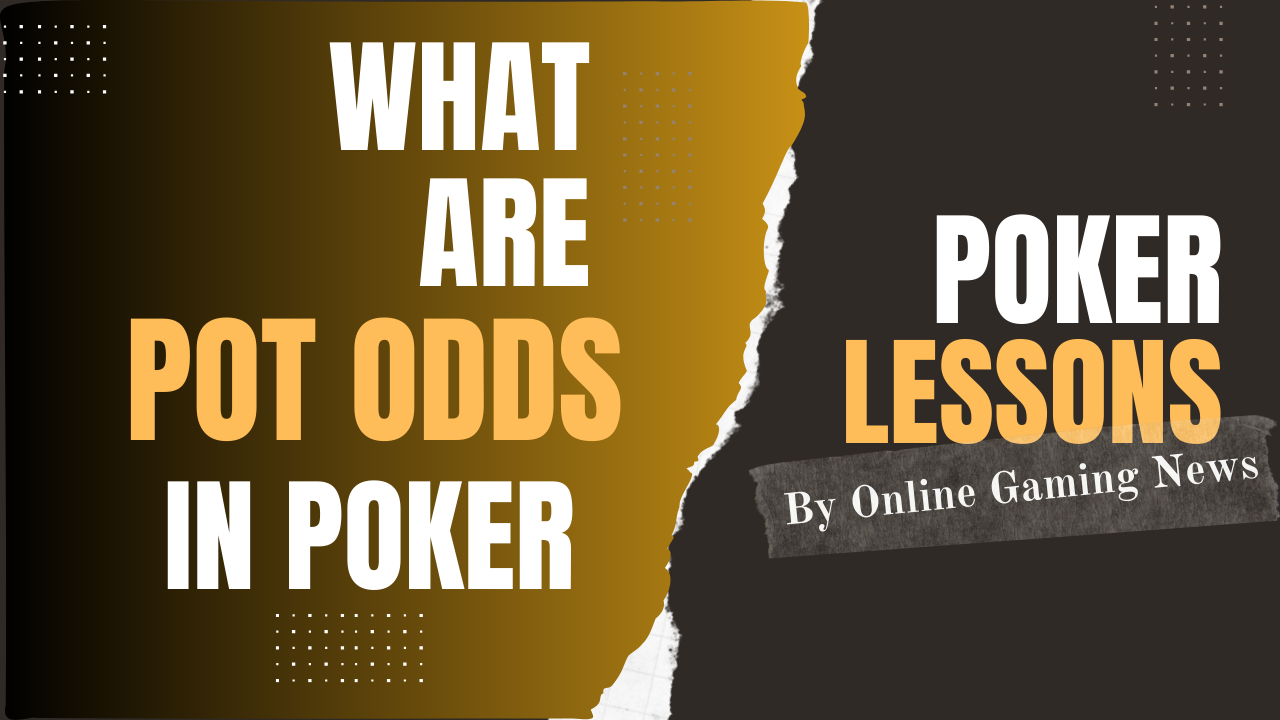Introduction
Pot odds in Poker are a fundamental concept that helps players make decisions based on the potential profitability of their hand. Understanding pot odds is crucial for making informed decisions and maximizing profitability in the long run.
What are Pot Odds?
Pot odds are expressed as a ratio or percentage and represent the relationship between the current size of the pot and the cost of calling a bet. By comparing the size of the pot to the cost of continuing in the hand, players can make informed choices about calling, raising, or folding.
Read – What are blinds?
Calculation of Pot Odds in Poker
The formula for calculating pot odds is:
Pot Odds = (Pot Size) / (Cost to Call)
For example, if the pot contains $100 and your opponent bets $20, your pot odds would be:
Pot Odds = $100 / $20 = 5:1
This means that for every $1 you invest by calling the bet, you stand to win $5 from the pot. Pot odds can also be expressed as a percentage by converting the ratio to a fraction and then multiplying by 100. In this example, the pot odds would be 20% (1 / 5 = 0.2 * 100 = 20%).
Determining Drawing Odds
To determine whether it is profitable to call a bet based on pot odds, you compare the odds of completing your hand (your ‘drawing odds’) to the pot odds. Drawing odds represents the probability of improving your hand to win the pot.
Let’s say you have a flush draw, meaning you need one more card of the same suit to complete a flush. In Texas Hold’em, you have nine outs (the number of cards of your suit remaining in the deck) with two cards to come. To calculate your drawing odds, you can use the rule of 2 and 4:
On the flop: Multiply your number of outs by 4 to get an approximate percentage of hitting your hand by the river.
On the turn: Multiply your number of outs by 2 to get an approximate percentage of hitting your hand by the river.
For our flush draw example, with nine outs on the flop, you have roughly a 36% chance of completing your flush by the river (9 outs * 4 = 36%). On the turn, you would have approximately an 18% chance (9 outs * 2 = 18%).
Once you have calculated your drawing odds, you compare them to the pot odds. If your drawing odds are better than your pot odds, it is generally profitable to call the bet. In other words, if the probability of completing your hand is higher than the ratio or percentage represented by the pot odds, you should call. If your drawing odds are worse than the pot odds, folding is usually the correct decision.
However, it’s essential to consider other factors when making decisions in poker, such as your opponents’ playing styles, your position at the table, the size of your stack relative to the blinds and antes, and any reads you have on your opponents.
Pot Odds Charts
Here’s a detailed poker pot odds chart:
Q. What are good pot odds in poker?
A: Good pot odds typically refer to situations where the potential reward (the size of the pot) outweighs the cost of calling a bet. While there’s no fixed threshold, pot odds that offer a higher ratio of potential winnings to the cost of calling are generally considered favorable.
Q. What is a pot bet in poker?
A: A pot bet, also known as a pot-sized bet, is a bet that’s equal in size to the current size of the pot. This type of bet is commonly used in no-limit and pot-limit games, where players can bet any amount up to the total size of the pot.
Q. What are pot odds vs. outs?
A: Pot odds and outs are related concepts but serve different purposes. Pot odds compare the size of the pot to the cost of calling a bet, helping players decide whether it’s profitable to continue in a hand. Outs, on the other hand, represent the number of cards left in the deck that could improve a player’s hand. Players use outs to calculate their drawing odds—the probability of hitting one of those outs to improve their hand.
Q. What are the odds of 4-to-1 pot?
A: The odds of a 4-to-1 pot refer to the pot odds ratio, indicating that for every $1 you invest by calling a bet, you stand to win $4 from the pot. This ratio is calculated by dividing the size of the pot by the cost of calling the bet. For example, if the pot contains $400 and the cost to call is $100, the pot odds are 4-to-1.
Q. Can pot odds be expressed as a percentage?
A: Yes, pot odds can be converted into a percentage by multiplying the ratio by 100.
Q. Should I always rely solely on pot odds to make decisions?
A: While pot odds are crucial, other factors such as player tendencies, position, and table dynamics should also be taken into account.
Q. How do I adjust pot odds calculations for different betting rounds?
A: In later betting rounds, the number of cards remaining in the deck may affect drawing odds. Adjust calculations accordingly.
Conclusion
Pot odds are an essential tool in a poker player’s arsenal, providing a systematic approach to evaluating the profitability of decisions during a hand. By understanding pot odds and how to apply them effectively, players can improve their decision-making skills and ultimately enhance their success at the poker table.
